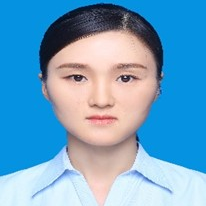Inorganic Functional Materials: Synthesis and Application
A special issue of Applied Sciences (ISSN 2076-3417). This special issue belongs to the section "Applied Physics General".
Deadline for manuscript submissions: closed (31 March 2023) | Viewed by 2199
Special Issue Editors
Interests: ionizing radiation; scintillator; detector; crystal growth; ceramics
Interests: ceramics; glasses; scintillators; phosphors; solid state chemistry; microstructure
Special Issue Information
Dear Colleagues,
Inorganic functional materials form the basis of the technical development of our civilization. Among their variety for this Special Issue, we selected those that are used to convert various types of energy into optical photons, the so-called materials for photonics. Such materials are typically used both as sources of optical radiation, for example, in illumination or generation of laser radiation, and as intermediate materials for working with photosensors, photovoltaic cells, etc. The set of the emitting or luminescent parameters of such compounds is formed by the composition of the atoms included in their structure.
The achievements of recent years in the fields of theory and technology of photonic materials make it possible to purposefully design their properties, which contributes to their rapid implementation in practice. The transition from single-and di-cation compounds to multi-ion (cationic and anionic) systems is particularly intriguing. It permits the construction at the atomic levels, making it possible to achieve simultaneous control of the band gap, the electron density structure in the zones adjacent to it, and the disposition of radiative levels inside it. This approach also provides the prerequisites for solving other problems, in particular minimizing optical radiation losses inside the material under various operating conditions.
A variety of developed and used methods for the preparation of multiionic compounds make it possible to quickly introduce such materials into equipment using materials for photonics.
Prof. Dr. Mikhail Korzhik (Korjik)
Dr. Georgiy Dosovitskiy
Dr. Yunyun Li
Guest Editors
Manuscript Submission Information
Manuscripts should be submitted online at www.mdpi.com by registering and logging in to this website. Once you are registered, click here to go to the submission form. Manuscripts can be submitted until the deadline. All submissions that pass pre-check are peer-reviewed. Accepted papers will be published continuously in the journal (as soon as accepted) and will be listed together on the special issue website. Research articles, review articles as well as short communications are invited. For planned papers, a title and short abstract (about 100 words) can be sent to the Editorial Office for announcement on this website.
Submitted manuscripts should not have been published previously, nor be under consideration for publication elsewhere (except conference proceedings papers). All manuscripts are thoroughly refereed through a single-blind peer-review process. A guide for authors and other relevant information for submission of manuscripts is available on the Instructions for Authors page. Applied Sciences is an international peer-reviewed open access semimonthly journal published by MDPI.
Please visit the Instructions for Authors page before submitting a manuscript. The Article Processing Charge (APC) for publication in this open access journal is 2400 CHF (Swiss Francs). Submitted papers should be well formatted and use good English. Authors may use MDPI's English editing service prior to publication or during author revisions.
Keywords
- materials for photonics
- luminescence
- light emitters
- scintillators
- crystal growth
- ceramics
Benefits of Publishing in a Special Issue
- Ease of navigation: Grouping papers by topic helps scholars navigate broad scope journals more efficiently.
- Greater discoverability: Special Issues support the reach and impact of scientific research. Articles in Special Issues are more discoverable and cited more frequently.
- Expansion of research network: Special Issues facilitate connections among authors, fostering scientific collaborations.
- External promotion: Articles in Special Issues are often promoted through the journal's social media, increasing their visibility.
- Reprint: MDPI Books provides the opportunity to republish successful Special Issues in book format, both online and in print.
Further information on MDPI's Special Issue policies can be found here.







